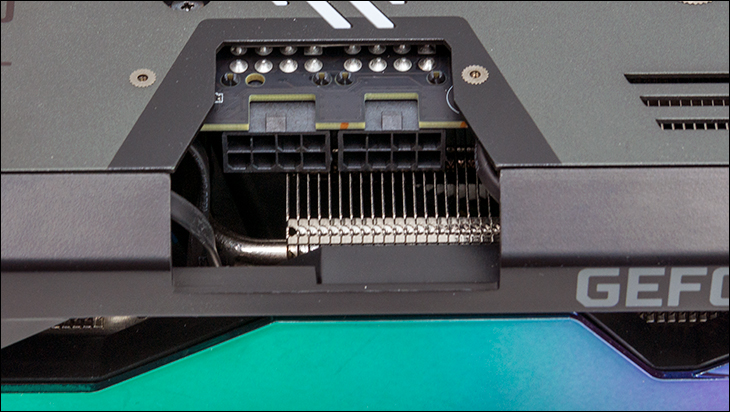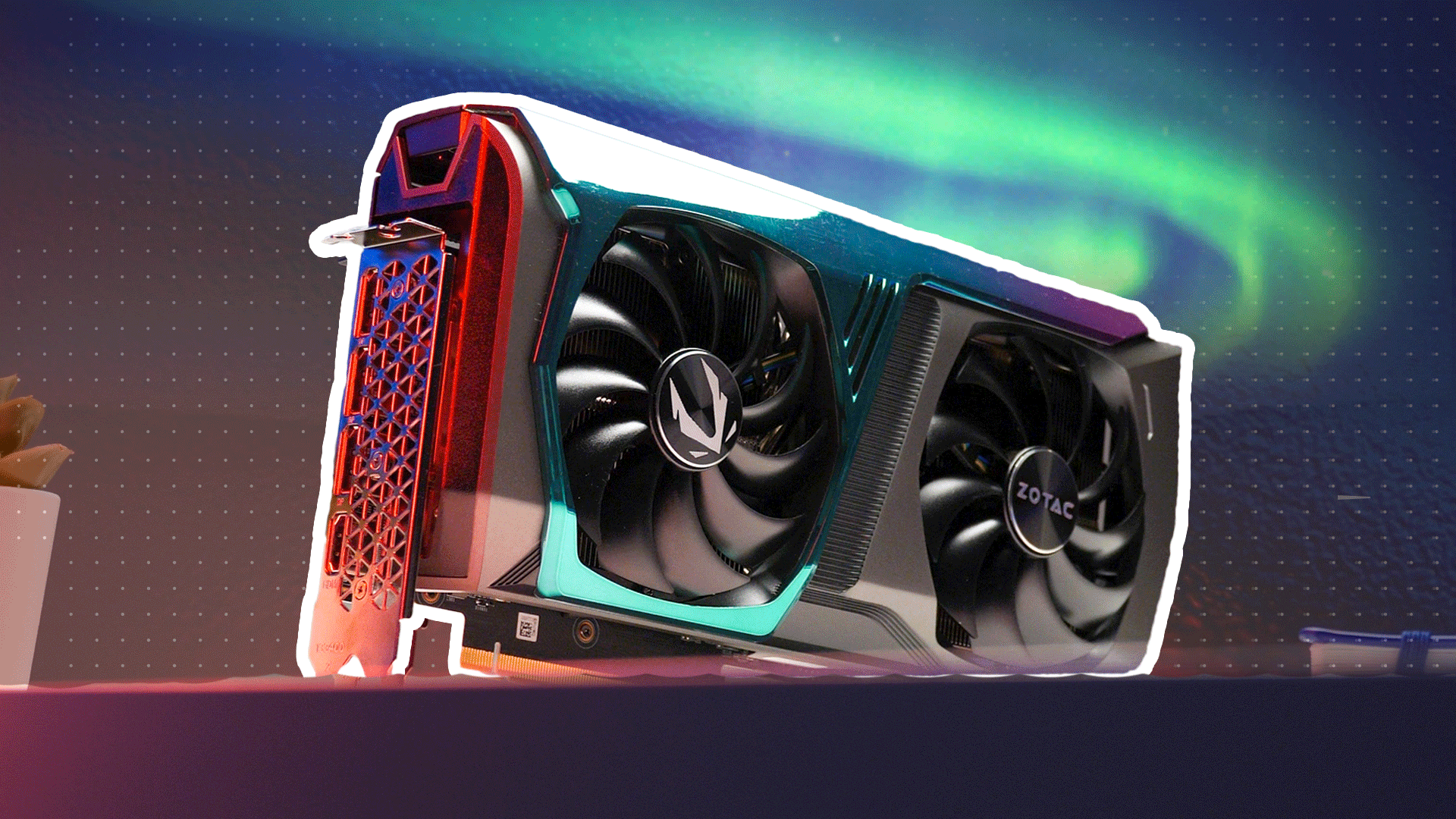
Honestly, for most the actual heft and dimensions of this card is not what is going to create their first impression. It is going to be the stunning good looks that jumps out and makes you understand this is not your typical RTX 3070 card.

We are of course talking about the aesthetics of this unique RTX 3070. The name ‘HoloBlack’ says it all on what Zotac engineers were aiming for when they sat down and designed this new gaming card… and they knocked it right out of the park. While we do wish they went full premium and used more metal instead of plastic there is no arguing with the end result. The combination of an appropriate number of LEDs that provide targeted color accents with aurora borealis like color scheme to the top and side fascia is a winning one. It just simply stands out and grabs your attention. More importantly it does so in a good, non-garish, way.
This is not a card that screams ‘1337 G4M3R’ or tries to appeal to your inner child. Instead Zotac realized that there are a lot, and we mean a lot, of adult gamers who want a high-performance GPU but do not want to be taken back to their middle school days. They want a card that is elegant and graceful. That is what the Zotac RTX 3070 AMP HoloBlack is. Basically, it is a Grace Kelly not a Marylin Manore when it comes to exuding sexiness. That is refreshing and we wish more companies would take a risk and cater to the mature PC gaming enthusiast.
We could go on and on about how attractive this card is. We could include a billion different photos… but if a picture is worth a thousand words, a video of it in action is worth a million. So this is what it looks like in its native habitat – your system – doing what it does best: looking like a million bucks while crushing even the most demanding of games.

Now, with all that said there is a bit of form over function taking place with this design. While it is indeed true this is a 11.5-inch long card, the fin array does not take full advantage of these dimensions. Instead, the top fascia sticks out a good ½ to ¾ inch past it. That is disappointing as this is potential cooling area is wasted, or alternatively Zotac could have made it slightly shorter and made it even more compact. They did neither and as such it is may indeed be a fairly compact card… but could have been one of the most compact RTX 3070 factory overclocked cards available today. Now that would have been impressive. They did not and that is a real missed opportunity to further differentiate this card from other RTX 3070s.

Moving on. Arguably a controversial feature of the Zotac GeForce RTX 3070 AMP HoloBlack will not be its asking price. Instead, it will be the power connectivity it makes use. NVIDIA has made a big, neigh massive, push to hype the new 12-pin power connector their shiny new RTX 3000-series uses. For a RTX 3090 or even RTX 3080 it makes perfect sense. Arguably even for the RTX 3070 class of cards it is possibly a good idea. For a card which will pull only -at most- 250 watts it is not just overkill it is contraindicated. So much so a good, ‘old fashioned’ dual 8pin PCIe connector setup makes a ton more sense.
To explain our reasoning a bit of electrical theory is needed. The 12-pin connector consists of 6 power and 6 ground pins. Each pin is 12v and has a maximum amperage rating of well… this is where things go off the rails. Technically each power pin is good for 9amps of goodness, or a grand total of 648 watts of power coming directly from the PSU 12pin cable. Sadly, 9amps requires 16 American Wire Gauge cables for safety reasons (as an aside 18AWG is actually good for 10 amps at 12v… but no one in their right mind runs at full max standard, as that is a recipe for melted wires and house fires). 16AWG is thicker, less flexible and generally speaking is not all that common (yet). In years to come this will change, but right now most PSUs make use of 18 AWG cabling… as that is what the PCIe Express standard requires for 8-pin PCIe cables. When dealing with the more common 18AWG the 12-pin connector power rating gets dropped to 7 amps – or 504 watts.
Conversely, even though the older 8-pin uses a 3 power + 5 ground configuration it is only rated for 150watts. This is because the standard allows for ‘double headers’ or 300 watts off a single 8-pin PCIe cable. 504 watts is obviously still better than 300 watts but the PCIe 16x port on the motherboard can deliver another 75 watts of power (as PCIe-SIG the governing body for the PCIe standard did not increase max PCIe slot power draw for version 4.0). Even taking into account transient, millisecond, power peaks… 375 watts offers a massive safety margin and is more than ‘good enough’ for a 240 watt card. Thus the 12-pin buys owners nothing beyond increases compatibility headaches.

Equally important, is while the 12-pin also offers slightly smaller foot-print, when dealing with a freakin’ 11.5 inch long, 2.5 slot high, three-pound card… a bit more room taken up for the power ports is a rounding error in the grand scheme of things. That is why we have no issue with the use of 2×8-pin header, and in fact prefer it. Your millage may vary and some others do use the shiny new 12v port on their variants. Instead, the only ‘issue’ is that these power headers are recessed. As you can see, when you do plug in both power cables they will be underneath part of the fin array. We dislike seeing this as this does increase heat and is a potential source for cable sheathing melting. That is highly unlikely, but is a potential issue never the less.











